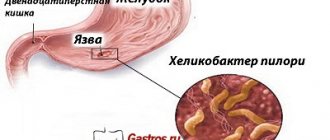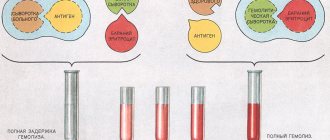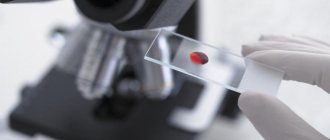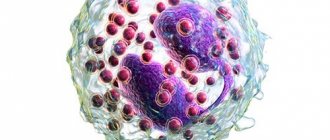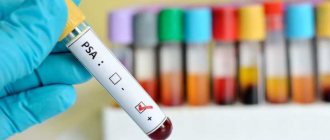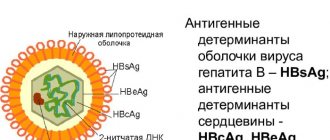Among men aged 40 years and older, BPH and prostate cancer are slightly less common than prostatitis. These diseases are life-threatening and difficult to treat, so it is good if they are detected early.
One of the early diagnostic methods is to detect the tumor marker PSA in the blood. In the article we will talk about what a PSA analysis is, give its interpretation and normal indicators, taking into account the age of the man being examined. The information is intended for a wide range of readers.
What is PSA and what is the essence of the analysis?
In oncology, tumor markers are understood as various specific compounds that appear in the body in response to the development of cancer cells. They are found in the blood, less often - in the urine of a sick person and may indicate a precancerous condition or the onset of oncology. One such substance is the prostate specific antigen PSA (PSA).
PSA is an enzyme produced by healthy or cancerous prostate cells. In the absence of pathology, excess PSA is excreted from the body along with prostate secretions during ejaculation, and only a small amount of the antigen enters the man’s blood. With the development of prostate cancer or adenoma, the PSA content in the patient’s blood increases, which is detected in the blood serum donated for human testing.
Monitoring PSA levels in men over the age of 40 allows timely initiation of treatment, preventing metastasis and damage to organs and tissues close to the prostate. This screening method has been widely used for 20 years, during which time oncologists have managed to reduce the mortality rate from prostate cancer by 25% due to the timely initiation of therapeutic measures.
May be interesting: First signs of prostatitis in men
The norm of a dog in the blood of men and deviations from this indicator
The PSA norm in men is considered to be no more than 4.0 ng/ml; if this indicator is exceeded, the patient may be referred for a biopsy, but elevated PSA is not always a sign of cancer. If a malignant tumor is suspected, the patient is prescribed additional tests.
Elevated PSA level in the blood, the norm is more than 4.0 ng/ml:
Exceeding the norm suggests that the prostate gland is under the influence of some processes, internal or external. It increases only when the barrier between prostate cells and the circulatory system is disrupted.
External effects on the prostate:
- examination of the gland by palpation;
- prostate massage;
- long bike rides;
- horse riding;
- violent sex on the eve of analysis;
- performing cystoscopy;
- placing a catheter in the bladder;
- aging of the body (age deviations);
- taking medications to treat benign tissue growths and certain medications.
If there are no such external effects on the prostate, then they talk about pathologies of the gland itself or other internal problems.
The PSA level in a man’s blood deviates in the following diseases:
- acute prostatitis;
- exacerbation of chronic prostatitis;
- inflammatory diseases of the urinary tract;
- prostate ischemia;
- prostate enlargement;
- benign hyperplasia;
- prostate infarction;
- malignant tumor.
Reduced PSA level in the blood, the norm is less than 2.0 ng/ml:
A low PSA index is normal, which means that the risk of developing pathological processes in the gland is minimal. A decrease in prostate-specific antigen indicates the effectiveness of treatment of prostate diseases.
Interpretation of the result
The PSA norm in men characterizes a healthy prostate gland. If PSA is elevated, then the doctor deciphers the indicators, and it is very important to take two tests at once - free and general. It is the ratio of indicators that makes it possible to diagnose cancer and differentiate it from other pathologies that are similar in symptoms to malignant formations.
The concentration of total PSA in the blood changes slightly; an increase in the index can indicate cancer, prostatitis, and adenoma. In case of malignant formation, the level of free PSA is low, and in case of benign hyperplasia or inflammatory processes in the prostate, it is high. A specialist, interpreting these indicators, can confidently diagnose cancer or exclude such a tumor.
note
The value of free PSA to total is determined in the range from 12 to 100 percent. The higher the score, the less likely the risk of developing cancer.
If the doctor determines cancer, then additional studies are carried out to prescribe adequate treatment.
Traditional treatment for prostate cancer is as follows:
- External beam radiation therapy is the most common method of fighting cancer. It involves irradiation of the diseased organ, the projection of the organ is determined by MRI.
- Brachytherapy is a type of radiotherapy that is performed in the absence of metastases. Considered the most effective technique today, the advantage of the operation is that the radiation source is supplied directly to the affected organ, eliminating the harmful effects on other tissues.
- Prostatectomy is a surgical procedure to treat prostate cancer. Such a radical measure is resorted to if other methods are not effective; as a result of the operation, the prostate gland, iliac lymph nodes and seminal vesicles are completely removed.
Types of PSA and their diagnostic value
PSA can be of three types, which depend on the structure and presence of certain molecules. Thus, in modern oncology there are:
- free tumor marker PSA;
- proteinase inhibitor related;
- associated with an endopeptidase inhibitor.
The latter increases in inflammatory diseases and is not detected in laboratory tests of blood serum, so the first two types have diagnostic value. Their combination is referred to as “total blood PSA”.
Scheme: common and free psa markers
When examining material, laboratory technicians first check the level of total PSA. If it turns out that the indicator is higher than the norm for a certain age, this serves as a signal to identify the amount of free tumor marker and that associated with a proteinase inhibitor. Only after this may there be reason to suspect the patient has prostate cancer or prostate adenoma.
Total to free PSA ratio
At this time, there is no clear, generally accepted framework for PSA screening test indicators. We are talking about the likelihood of developing tumor pathologies of the “second heart” of men. In patients with a complex antigen fraction level of 4–10 ng/ml, biopsy responses indicate prostate cancer in 25–32% of cases, and with a level of more than 10 ng/ml, the probability of such results is 50%. In men with confirmed prostate cancer, an antigen concentration of 1000 ng/ml or higher was detected.
The proportionality of total and free PSA, that is, comparison of two fractions of the marker, is carried out for more accurate diagnosis when the total form of the antigen increases from 4 to 10 ng/ml. These values are subject to debate and are called the border zone.
In half of patients with a benign prostate tumor, the serum antigen level is higher than the known norm in men. The size of the latter depends on the size of the gland itself, the degree of stenosis or blockage of the urethra.
An increase in marker concentration is observed in the following pathologies:
- prostate adenoma,
- bacterial prostatitis,
- PCa,
- active manipulation of the prostate,
- impotence,
- intense physical activity,
- ejaculation,
- dysuric phenomena.
Prostate-specific antigen is a very sensitive tumor marker and is effective in monitoring patients who have undergone appropriate treatment (radiation therapy, radical prostatectomy). The screening test reliably determines the condition of the tumor and has important prognostic value. To monitor the dynamics of the therapeutic course, it is important to compare the PSA concentration with previous values of this value, but not with reference figures.
When is a PSA test ordered?
It is believed that using a PSA blood test can detect cancer at an early stage, thereby reducing the likelihood of death, but the possibility of a diagnostic error cannot be ruled out, especially if we are talking about a young patient. Therefore, doctors call the optimal age for conducting such studies 45 years and older. If the man is much younger, then he may be referred for a PSA blood test for the following complaints and situations:
- if the patient's father or grandfather had prostate cancer;
- for chronic urological diseases;
- with complaints of frequent urge to urinate, especially at night;
- with urination problems (sluggish or intermittent stream of urine);
- with difficulty urinating, feeling of a full bladder.
The last three types of symptoms are not characteristic and may indicate either acute prostatitis or adenoma, or prostate cancer. It is to clarify the diagnosis that a blood test for prostate specific antigen is prescribed.
Antigen blood testing is also necessary to monitor health status during certain activities related to the fight against prostate pathologies:
- removal of a cancerous tumor;
- infarction in prostate tissue;
- organ cancer therapy.
If your doctor sends you for a PSA blood test, this means that he suspects prostate cancer. However, there is no reason to worry yet. Determining the level of PSA in the blood is not a self-sufficient method and it is possible that a comprehensive examination will not confirm the fears.
Decoding the PSA analysis
If the PSA analysis shows that the permissible limits of the agent in the patient’s blood are exceeded, this means that a malignant neoplasm is developing in the body. The greater the deviation from laboratory norms, the later the stage at which the disease is usually diagnosed.
If, when donating blood, low levels are found that do not exceed the permissible limits, it is premature to make a diagnosis. The patient is recommended to undergo the test again, and to do it correctly, having carefully prepared.
In addition to blood serum, you will need to submit several other types of tests and undergo additional examinations.
- It is necessary to undergo a clinical blood test, as a result of which the composition of the serum will be studied.
- Two parameters are important here - the level of leukocytes and the erythrocyte sedimentation rate.
- Any tumor causes inflammation, and the immune system responds to this by increasing the number of white blood cells. They are designed to neutralize harmful viruses and infections that cause this inflammation.
- The sedimentation rate of erythrocytes also increases, since leukocytes “stick” to them and, obeying the law of gravity, pull them down.
- Usually, when a patient with the disease is tested, both indicators are above normal. An increase in PSA analysis parameters is not a reason to establish a final diagnosis; indicators within normal limits are also not a reason to cancel a preliminary one.
- The next test prescribed for a patient with a preliminary diagnosis of prostate cancer is a detailed test for a prostate specific agent. What is important here is not the total level of antigen, but its relationship to the “antichymotrypsin-associated” form. If the decoding indicates that both indicators are exceeded, then this is not the best result.
- The density of the enzyme will need to be studied. This indicator is based on the ratio of total PSA and gland size, which are determined by ultrasound diagnostics. If the density of prostate antigen is below normal, this is a direct sign of the development of hyperplasia of the male organ, and its excess indicates a malignant nature.
Donating blood for PSA involves repeated testing to track the indicator over time. The rate at which the level of antigen in the serum increases indicates how great the development of a cancerous tumor is.
Examinations only in combination will help establish a diagnosis. The content of each individual substance cannot be determined; the doctor must rely on the totality of the data obtained.
- The most reliable test in modern medicine is a biopsy. For this purpose, under anesthesia, prostate tissue is collected and sent for histology. The results will put an end to the diagnosis.
- A biopsy is prescribed after the PSA test shows a high level and ultrasound confirms an increase in the size of the gland.
How to prepare for the test
In medicine, the accuracy of various diagnostic measures depends on how carefully the patient prepared for the examination, and the described tests are no exception. A number of substances and factors can distort the indicators, which will lead to incorrect diagnosis and incorrect treatment.
If you have been referred to donate blood to determine your total and free PSA levels, follow these rules:
- Two days before the appointed date, avoid intimacy. Each ejaculation increases the level of PSA in the blood.
- Four days before the date, exclude spicy, fried and fatty foods from your diet, and do not drink alcohol.
- Avoid strenuous exercise 3 3 before the test, especially horse riding and cycling.
With a competent approach to testing, the doctor should stop massaging the prostate 3 days in advance and not perform TRUS of the prostate gland. A blood test for PSA is allowed no earlier than six months after transurethral resection of the prostate.
How to prepare for a PSA test
There are no other standards for preparing for the test. However, if you are taking any medications, especially those that affect blood composition, you should warn your doctor about this. It is possible that the course will have to be suspended.
How to submit correctly?
In order for the results of the prostate-specific antigen test to be accurate, careful preparation is necessary:
- Donate blood strictly on an empty stomach.
- You cannot eat or drink anything other than clean drinking water.
- Preparation includes abstaining from sexual activity, including masturbation, for three days before collecting biomaterial.
- If a prostate massage is prescribed, a test is required one day after the last session.
- If the doctor has prescribed a rectal ultrasound for the patient, it is better to donate blood before the procedure. Otherwise, tests will be possible no earlier than a week after the ultrasound.
- Men who have undergone prostate surgery with partial removal of the prostate are not scheduled for testing for six months.
- Preparing for a PSA test includes following a diet. The night before, you should give up a heavy dinner and alcoholic drinks, and in the morning - cigarettes and coffee.
How is a PSA blood test taken?
Blood is donated on an empty stomach, so it is better not to eat anything on the day on which the collection is scheduled. If you are very thirsty, you can drink, but only regular (not mineral) water. It’s good if a man doesn’t smoke in the morning; if this is impossible, at least for the last hour before entering the office.
There is no need to worry about how to donate blood - the nurse will do everything without the participation of the patient. On his part, you just need to calm down, not worry and go into the office. Blood is taken from a vein in the elbow joint in an amount of no more than 10 ml. A regular syringe is used to collect the material, so the manipulations are painless.
Blood testing is carried out using ELISA analysis, so it does not take more than one day. As a rule, the very next day the doctor receives a sheet with the results and begins to decipher the data.
Might be interesting:
|
PSA classification
Prostate-specific antigen in the blood is contained in 2 types:
- associated with proteins;
- free
The amount of bound PSA in the blood serum always exceeds the concentration of free PSA, regardless of whether the person is sick or healthy. However, in prostate tissue the amount of the former is only 2% of the total. Prostate specific antigen is most often associated with:
- α-1-antichymotrypsin;
- α-2-macroglobulin.
These substances act as inhibitors of the activity of PSA and other kallikreins, preventing them from accelerating biochemical reactions with their participation. The protein complex with α-2-macroglobulin cannot be detected by simple methods, which is why the bound form of the protein is mainly calculated from the connection with antichymotrypsin.
Thanks to additional research methods, it was revealed that in a healthy person the amount of PSA in the “hidden” complex is slightly higher than that with the second substance.
“Routine” analysis consists of identifying common prostate-specific antigen and its components:
- Free.
- Associated with α-1-antichymotrypsin.
The serum of a healthy man contains 20% free PSA, 45% in complex with macroglobulin and the remaining 35% protein associated with antichymotrypsin.
The protein can bind to zinc (inhibits the enzymatic activity of PSA), proteins of the gestation zone, and other substances.
Some of the above complexes in the blood serum are small, which is why we do not take their concentration into account. An accurate sign of a malignant process in the prostate gland, and not benign hyperplasia, is the amount of free PSA that is 10 or more times less than the total amount of protein.
Total PSA
An elevated level of total prostate-specific antigen is one of the primary diagnostic criteria, which can indicate a malignant process in the prostate gland. The following drugs used in the treatment of prostate adenoma reduce total PSA levels by 50%:
- Finasteride;
- Dutasteride;
- Proscar;
- Penester;
- Avodart.
These data are taken into account in the laboratory, where the concentration of the protein found in the patient’s blood serum is multiplied by 2 to obtain an adequate result.
Experiments on rats showed that PSA leaves the body only in bound form through the liver and kidneys. The half-life of active compounds is 2-3 days.
Accurate interpretation of results
There is no consensus among doctors about the normal level of PSA antigen in the blood of a healthy person. Some sources mention a value of 4 ng/ml, others the norm is 2.5 ng/ml. This contradiction has led to the fact that a man is referred for a prostate biopsy only in cases where the PSA level exceeds the 10 ng/ml level. This is due to the fact that unnecessary injury to the organ is not desirable, and such a high threshold allows one to more confidently declare cancer processes in the prostate gland.
PSA standards in men depend on age, so to decipher the results obtained, rely on our table.
| Age | PSA normal (ng/ml) |
| 40-44 | 2,0-2,3 |
| 45-49 | 2,4-2,7 |
| 50-54 | 2,8-3,2 |
| 55-59 | 3,3-3,7 |
| 60-64 | 3,8-4,4 |
| 65-69 | 4,5-5,1 |
| 70-74 | 5,3-6,0 |
| 75-79 | 6,2-7,0 |
| More than 80 | 7,2 |
However, knowledge of the PSA norm is not enough. After a blood test and if the results are elevated, the man needs to have a prostate biopsy. However, if the value is less than 10 ng/ml, but above normal, the PSA index, which is designated Ipsa, is used to determine the advisability of a biopsy. It depends on the ratio of free antigen to bound and is calculated using a simple formula:
Ipsa = (free PSA/bound PSA) x 100%.
A biopsy can be performed if the PSA index is less than 15%. If the rate is equal to or greater than 15%, then a prostate biopsy is not performed.
Types of PSA
In the laboratory, a study of the molecular fractions of PSA is carried out.
- It is divided into free and associated with antichymotrypsin or macroglobulin.
- The formula is: bound + free = PSA (total).
- To determine the patient’s condition, it has a general meaning - it includes the first type of connection and free.
If this indicator exceeds the permissible value, a second decoding is carried out, in which the bound and free antigen will be indicated separately.
When conducting laboratory research, it is important that a general and free analysis is carried out from one portion of the biomaterial.
Normal PSA test results
- A few years ago, the norm was 4 ng/ml. If this value was not exceeded, the doctors declared with full confidence that the patient was healthy and there was no reason to worry.
- Today, the value of this enzyme in a middle-aged man should not exceed 3 ng/ml. If the indicator increases to 4 ng/ml, there is an assumption of a malignant process.
It is especially important to monitor PSA levels (bound + free) if you have prostatitis.
The rate by which total and free prostatic antigen is calculated differs by age.
| Age | PSA normal limits |
| from 20 to 25 years | should not exceed 2.5 ng/ml |
| from 25 to 45 years | 3 ng/ml |
| over 50 years old | not higher than 3.5 ng/ml |
| over 65 years old | within 4 ng/ml |
This distinction is due to the size of the prostate. With age, it increases, as does the synthesis of the agent, and first the free one increases, and then the total one. If the element is not detected in the blood, this is also a normal value.
Causes of elevated and elevated PSA
An increase in PSA levels in the blood serum does not always indicate the development of cancer. Sometimes this phenomenon is associated with the type of activity of a man or with the characteristics of the body.
Interpretation of PSA tests
The most likely causes of an increased value (other than cancer) are:
- participation in professional or amateur extreme sports (mountain climbing, motorcycle and bicycle racing, etc.);
- congenital enlargement of the prostate;
- aging of the body.
An increase in PSA may also be caused by improper preparation for blood sampling, especially sexual intercourse or masturbation in the last three days.
As for lowering PSA levels, this may be due to both therapeutic measures and physiological characteristics. It has been established that the higher the body mass index in men, the lower the content of prostate-specific antigen in the blood.
Reasons for increasing PSA levels in the body
The amount of this specific hormone in the blood can increase significantly for such reasons.
- Prostate hypertrophy.
- Adenoma.
- Inflammatory pathologies of the prostate. Because of this, edema gradually develops in it, blocking its ducts. The evacuation of prostatic secretion is disrupted, causing it to enter the blood in large quantities. In this case, PSA becomes bound to proteins.
Note! Bound PSA is an oncologic marker of prostate cancer progression. When the amount of the hormone increases, doctors detect prostate cancer in the early stages. Diagnosis of associated prostate specific agent is very important because cancer does not manifest itself at these stages.
Cost of the study
Blood testing for PSA is possible only in licensed laboratories, of which there are relatively few. Therefore, the final cost of the analysis is influenced by a number of factors, including regional dependence and the level of the clinic to which the man applied. On average, prices across the country range from 600 rubles in Moscow and from 400 rubles in the regions.
Prices are indicated only for blood testing; you will have to pay extra for taking it for analysis, as well as for calculating the Ipsa index. So, in the capital, calculating the PSA index costs from 900 to 1000 rubles; in the regions this amount is slightly lower.
What is a PSA test?
If the examination results show high or elevated protein levels, this indicates that patients are developing the following prostate diseases:
- inflammation of varying degrees;
- adenoma;
- cancer.
PSA, or prostate specific antigen, is a glycoprotein consisting of 2 components - free and bound, produced by the male gland. This type of protein is needed to liquefy sperm and increase sperm motility. The prostate becomes larger as a man ages, causing the amount of a specific protein in the blood to increase.
The test is necessary first of all in order to detect the amount of prostatic protein. To do this, the ratio between total and free PSA is determined. The higher the amount of the common component, the higher the risk of developing prostate hyperplasia, inflammatory and infectious processes.
The doctor sends the patient for a test if the following symptoms are present:
- problems with night urination;
- weak or insufficient erection;
- hereditary pathologies.
The test is also prescribed as mandatory prophylaxis for all men over 40 years of age. Sometimes total and free PSA is prescribed to detect cancer or other diseases in the early stages.
The test is prescribed as a preventative measure for men over 40 years of age.
In order to take the test, the patient must prepare for it. The main thing is to remove all fatty foods from your diet. You cannot eat before the PSA test. At the same time as the test, patients undergo an ultrasound scan.
Let's sum it up
A dog blood test can detect an antigen that indicates the onset of cancer. This improves survival rates among older men. However, the accuracy of the result depends on how faithfully the patient followed the preparation rules. Note that independent decoding of the results may lead to errors, and such information is of no benefit to the patient himself. Based on the results, the doctor decides on the advisability of a biopsy and takes them into account when making the final diagnosis.
General recommendations and comments
The state of health in most cases depends on the person himself. To determine the developing malignant process in the early stages, it is necessary to undergo periodic preventive examinations.
That is why men, after reaching the age of 50, and in some cases even earlier (with existing prostate pathology), need to take a PSA test at least once a year.
If you detect test results that are outside the normal range, you should see an andrologist, urologist, or oncologist and undergo a full examination in order to early diagnose a possible disease.
Please note: not in all cases where analysis numbers go beyond the norm, there is a pathological process.
Detection of a malignant disease at an early stage makes it possible to recover from it in almost 100% of cases.
You will receive more detailed information about the method of blood testing for PSA and other tumor markers, as well as the effectiveness of these tests, by watching the video review:
Lotin Alexander, medical columnist
93, total, today
( 62 votes, average: 4.19 out of 5)
Uric acid in the blood: norms in women and men, reasons for the increase
Cervical canal culture during pregnancy
Related Posts
Rules for submitting biomaterial
In order for the analysis results to be as reliable as possible, it is very important to follow the recommendations for preparing for the blood sampling procedure, observing all the rules, in particular:
- You should come to the laboratory office early in the morning, always on an empty stomach , so that 8-10 hours have passed since your last meal.
- It is important to exclude from your diet 1–2 days before blood sampling black tea, coffee , all kinds of alcoholic and carbonated drinks, juices, sweets, as well as fried, smoked and fatty foods.
- It is also necessary to exclude sexual contact , and you should abstain from it for about a week before the procedure.
- You should also remember that you can take the test only 2 weeks after a urological examination, digital examination of the prostate, massage and other procedures.
- After the biopsy, you can take the test only after 2 months.
For the study, the patient's venous blood is taken . For diagnosis, the level of total PSA is of primary importance, but in some cases it may be necessary to determine the concentration of its free form to clarify the presumptive diagnosis. Further in the article you are provided with information about deciphering the analysis results.


